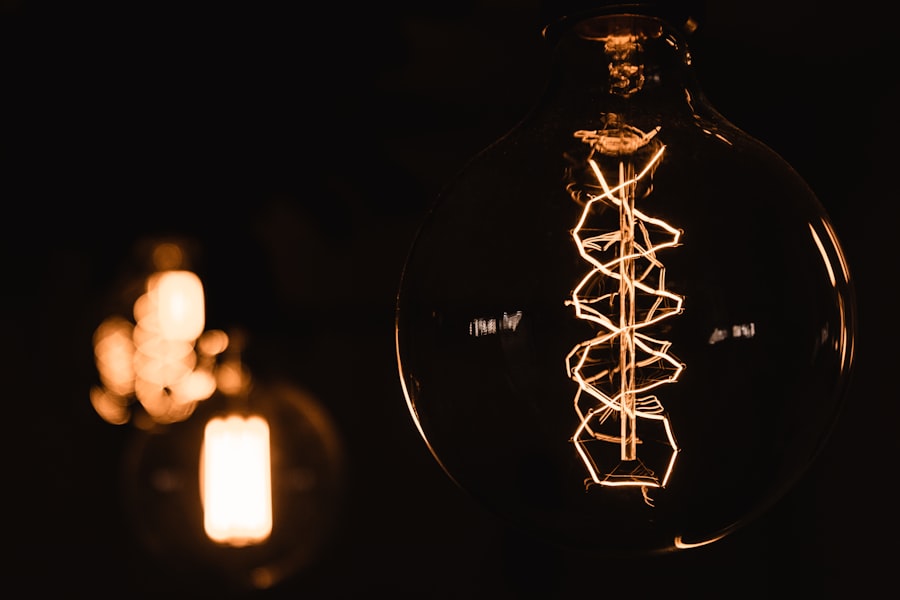Electricity costs can comprise a substantial portion of a household’s monthly expenditure. Given the growing dependence on electronic devices and appliances, it is crucial for homeowners to identify methods to reduce their electricity consumption and economise on their energy bills. Comprehending the factors that contribute to high electricity costs and implementing energy-saving strategies can assist homeowners in lowering their monthly expenses whilst also diminishing their environmental impact.
One of the primary factors contributing to high electricity costs is the inefficient use of energy within the home. Many households utilise outdated appliances and lighting fixtures that consume more energy than necessary. Furthermore, inadequate insulation and weatherproofing can lead to energy wastage, as heating and cooling systems must work harder to maintain a comfortable indoor temperature.
By addressing these issues and implementing energy-efficient solutions, homeowners can significantly reduce their electricity costs and create a more sustainable living environment for themselves and future generations.
Summary
- Home electricity costs can be a significant expense for many households, but there are ways to reduce these costs through eco-friendly energy saving tips and efficient lighting solutions.
- Switching to energy-efficient appliances can make a big difference in reducing electricity costs and minimising environmental impact.
- Proper insulation and weatherproofing can help to keep the home warm in winter and cool in summer, reducing the need for excessive heating and cooling.
- Installing a smart thermostat and using energy monitoring tools can help to optimise energy usage and reduce electricity costs.
- Exploring renewable energy options such as solar panels or wind turbines can provide a sustainable and cost-effective alternative to traditional electricity sources.
Eco-Friendly Energy Saving Tips
There are several eco-friendly energy-saving tips that homeowners can implement to reduce their electricity costs. One of the most effective ways to save energy is by investing in energy-efficient appliances. Energy-efficient appliances are designed to consume less electricity while still providing the same level of performance.
By replacing old, inefficient appliances with energy-efficient models, homeowners can significantly reduce their electricity consumption and save on their energy bills in the long run. Another eco-friendly energy-saving tip is to switch to LED lighting. LED bulbs are more energy-efficient than traditional incandescent bulbs and can last up to 25 times longer.
By replacing all the lighting fixtures in the home with LED bulbs, homeowners can reduce their electricity consumption and lower their energy bills. Additionally, homeowners can also consider installing solar panels on their property to generate renewable energy and reduce their reliance on the grid. Solar panels can help homeowners save on their electricity costs while also reducing their carbon footprint.
Efficient Lighting Solutions

Efficient lighting solutions play a crucial role in reducing electricity costs and conserving energy. LED lighting is one of the most efficient lighting solutions available on the market today. LED bulbs use up to 80% less energy than traditional incandescent bulbs and can last up to 25 times longer.
By replacing all the lighting fixtures in the home with LED bulbs, homeowners can significantly reduce their electricity consumption and save on their energy bills. Another efficient lighting solution is the use of motion sensor lights. Motion sensor lights are designed to automatically turn on when they detect movement and turn off when the movement stops.
This can help reduce unnecessary energy consumption by ensuring that lights are only on when needed. Additionally, homeowners can also consider installing dimmer switches for their lighting fixtures. Dimmer switches allow homeowners to adjust the brightness of their lights, which can help save energy and create a more comfortable living environment.
Energy-Efficient Appliances
| Appliance | Energy Efficiency Rating | Annual Energy Consumption (kWh) |
|---|---|---|
| Refrigerator | A++ | 150 |
| Washing Machine | A++ | 150 |
| Dishwasher | A++ | 250 |
| Oven | A+ | 200 |
Investing in energy-efficient appliances is one of the most effective ways to reduce electricity costs in the home. Energy-efficient appliances are designed to consume less electricity while still providing the same level of performance as traditional appliances. When shopping for new appliances, homeowners should look for the Energy Star label, which indicates that the appliance meets certain energy efficiency standards set by the Environmental Protection Agency (EPA).
By replacing old, inefficient appliances with Energy Star certified models, homeowners can significantly reduce their electricity consumption and save on their energy bills. In addition to choosing energy-efficient appliances, homeowners can also take steps to improve the efficiency of their existing appliances. For example, regularly cleaning or replacing air filters in heating and cooling systems can help improve their efficiency and reduce energy consumption.
Similarly, using cold water for laundry and only running the dishwasher when it’s full can also help save on electricity costs. By being mindful of how they use their appliances, homeowners can make a significant impact on their overall electricity consumption.
Insulation and Weatherproofing
Proper insulation and weatherproofing are essential for reducing energy wastage and lowering electricity costs in the home. Poor insulation can lead to heat loss in the winter and heat gain in the summer, forcing heating and cooling systems to work harder to maintain a comfortable indoor temperature. By improving insulation in the attic, walls, and floors, homeowners can create a more energy-efficient living environment and reduce their reliance on heating and cooling systems.
Weatherproofing is another important aspect of reducing energy wastage in the home. Sealing air leaks around windows, doors, and other openings can help prevent drafts and improve the efficiency of heating and cooling systems. Additionally, installing double-glazed windows can help improve insulation and reduce heat transfer, further lowering electricity costs.
By addressing insulation and weatherproofing issues in the home, homeowners can create a more comfortable living environment while also saving on their energy bills.
Smart Thermostat and Energy Monitoring

Installing a smart thermostat and implementing energy monitoring systems can help homeowners better manage their electricity consumption and reduce their energy bills. Smart thermostats are designed to automatically adjust the temperature settings based on the homeowner’s preferences and daily routines. This can help reduce unnecessary energy consumption by ensuring that heating and cooling systems are only running when needed.
Energy monitoring systems allow homeowners to track their electricity usage in real-time and identify areas where they can make improvements. By understanding how and when they use electricity, homeowners can make informed decisions about how to reduce their energy consumption and save on their energy bills. Additionally, some energy monitoring systems also provide insights into which appliances are consuming the most electricity, allowing homeowners to make more informed choices about their energy usage.
Renewable Energy Options
Renewable energy options such as solar panels and wind turbines offer homeowners a sustainable way to generate electricity and reduce their reliance on the grid. Solar panels are particularly popular among homeowners as they can be installed on rooftops or in open spaces to capture sunlight and convert it into electricity. By generating their own renewable energy, homeowners can significantly reduce their electricity costs while also reducing their carbon footprint.
In addition to solar panels, some homeowners may also consider installing small-scale wind turbines to generate renewable energy. Wind turbines can be particularly effective in areas with consistent wind patterns, providing a reliable source of renewable electricity for the home. By investing in renewable energy options, homeowners can take control of their electricity consumption and contribute to a more sustainable future for themselves and future generations.
In conclusion, reducing home electricity costs is not only beneficial for homeowners’ wallets but also for the environment. By implementing eco-friendly energy-saving tips, efficient lighting solutions, investing in energy-efficient appliances, improving insulation and weatherproofing, installing smart thermostats and energy monitoring systems, as well as considering renewable energy options, homeowners can significantly lower their electricity bills while creating a more sustainable living environment for themselves and future generations.
If you’re looking for more ways to make your home more eco-friendly, you might be interested in an article on what sustainability and being eco-friendly really mean. This article provides a deeper understanding of the principles behind living a more sustainable lifestyle, which can complement your efforts to lower your electricity bills at home.
FAQs
What are some simple ways to lower electricity bills at home?
Some simple ways to lower electricity bills at home include using energy-efficient appliances, turning off lights and electronics when not in use, using natural light during the day, and adjusting the thermostat to a moderate temperature.
How can energy-efficient appliances help lower electricity bills?
Energy-efficient appliances consume less energy, which can result in lower electricity bills. Look for appliances with the Energy Star label, which indicates that they meet energy efficiency guidelines set by the Environmental Protection Agency.
What are some tips for reducing energy usage in the kitchen?
To reduce energy usage in the kitchen, use the microwave instead of the oven when possible, keep the refrigerator and freezer well-organized to improve airflow, and use lids on pots and pans to cook food more efficiently.
How can I lower my heating and cooling costs?
To lower heating and cooling costs, consider installing a programmable thermostat to regulate temperature, sealing any drafts around windows and doors, and using ceiling fans to circulate air and reduce the need for heating or cooling.
What are some ways to reduce energy consumption in the laundry room?
To reduce energy consumption in the laundry room, wash clothes in cold water, use a clothesline or drying rack instead of a dryer when possible, and clean the lint filter in the dryer regularly to improve efficiency.
How can I make my home more energy-efficient?
To make your home more energy-efficient, consider adding insulation, sealing air leaks, using energy-efficient lighting, and installing solar panels or other renewable energy sources.


